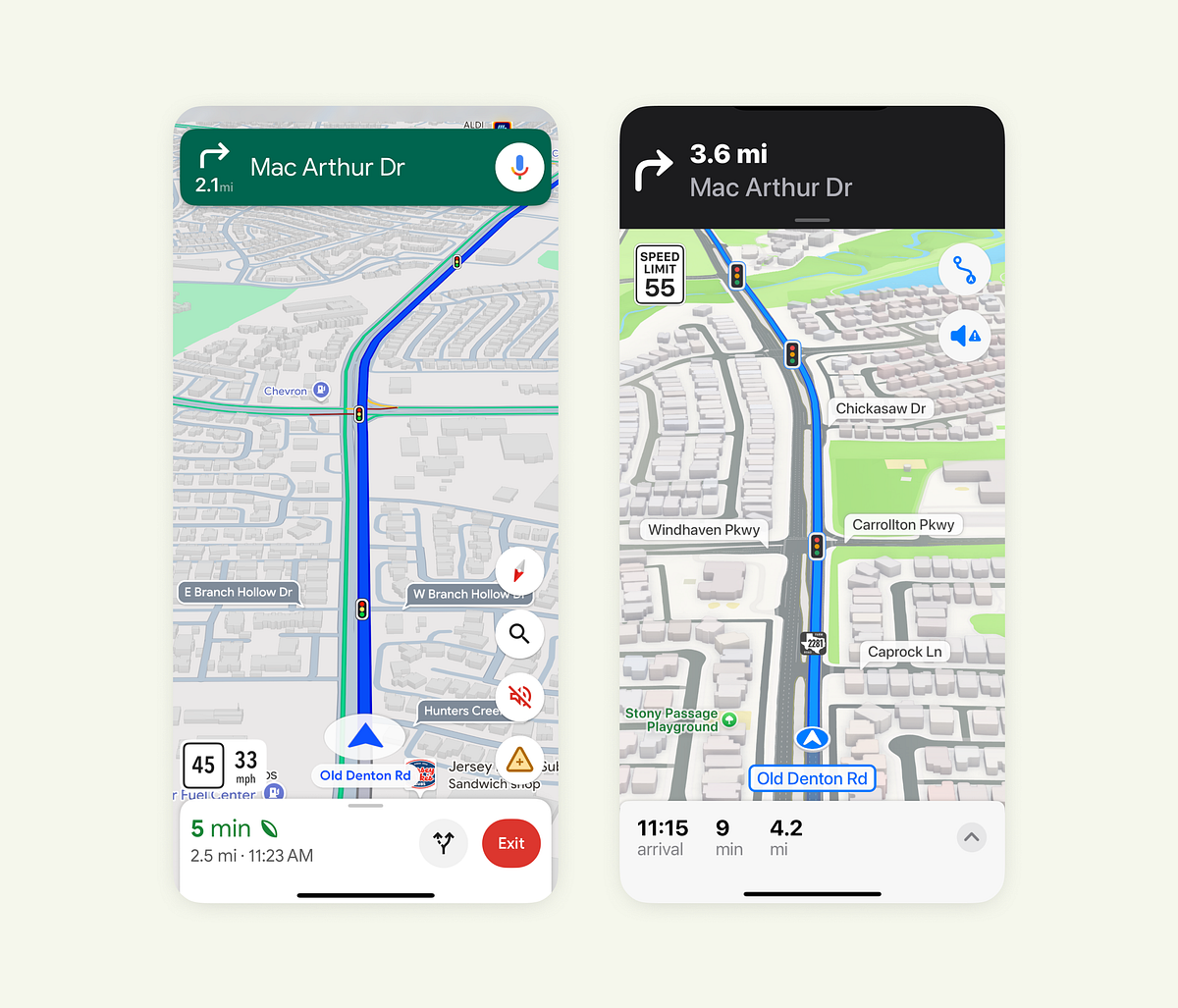
"In Google Maps, the speed limit sits close to your current location and route line, exactly where your eyes naturally go when driving. The app also shows your live speed, and when you exceed the limit, it highlights the change to draw attention. This design helps users stay aware without shifting focus from the road. Apple Maps places the speed limit near the top, just below the next navigation step. This spot makes sense too, since drivers often glance there for upcoming turns."
"Google's bottom bar carries a lot of weight. It shows distance, time, ETA, and sometimes even eco-driving info. The mix of colors, typography sizes, and icons helps users scan information quickly. But it can also feel dense, especially in bright environments or when you just want to focus on the route. Apple takes the opposite approach. It keeps the bottom bar clean and balanced, using consistent typography and minimal color."
Navigation apps contain hundreds of small design decisions that influence how people drive, what they notice, and how confident users feel. Google Maps favors information density and quick action, placing critical cues like the speed limit close to the route line and showing live speed to draw attention when limits are exceeded. Apple Maps favors clarity, calm, and visual harmony, positioning the speed limit near the top next to upcoming turns and using familiar iconography. Google’s bottom bar displays many items with varied colors and typography for rapid scanning. Apple’s bottom bar stays clean and balanced with minimal color to reduce cognitive load.
Read at Medium
Unable to calculate read time
Collection
[
|
...
]